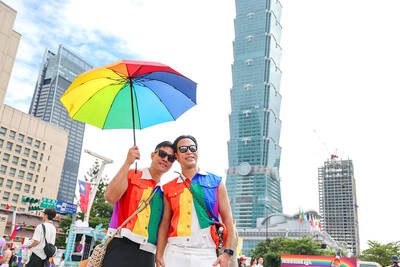對話 Dialogue
小實:馬克,你在做什麼?
Xiaoshi: Mǎkè, nǐ zài zuò shénme?

馬克:我在上網啊!我想找好玩的地方。
Make: Wǒ zài shàngwǎng a! Wǒ xiǎng zhǎo hǎowán de dìfāng.
小實:在學校附近嗎?
Xiaoshi: Zài xuéxiào fùjìn ma?
馬克:對啊,聽說美麗華有個很大的摩天輪,你去過嗎?
Make: Duì a, tīng shuō Měilìhuá yǒu ge hěn dà de mótiānlún, nǐ qùguò ma?
小實:我去過,美麗華不只有摩天輪,還有電影院、餐廳和商店。
Xiaoshi: Wǒ qùguò, Měilìhuá bù zhǐ yǒu mótiānlún, háiyǒu diànyǐngyuàn, cāntīng hàn shāngdiàn.
馬克:聽起來很不錯!你看,有網友說故宮博物院也很漂亮。
Make: Tīng qǐlái hěn búcuò! Nǐ kàn, yǒu wǎngyǒu shuō Gùgōng bówùyuàn yě hěn piàoliàng.
小實:故宮也在學校附近,要是你喜歡歷史,可以去參觀。
Xiaoshi: Gùgōng yě zài xuéxiào fùjìn, yàoshì nǐ xǐhuān lìshǐ, kěyǐ qù cānguān.
馬克:好,我上午去故宮參觀,下午去美麗華坐摩天輪。
Make: Hǎo, wǒ shàngwǔ qù Gùgōng cānguān, xiàwǔ qù Měilìhuá zuò mótiānlún.
翻譯Translation
Xiaoshi: Mark, what are you doing?
Mark: I’m surfing the internet! I’m looking for a fun place.
Xiaoshi: Is it near the campus?
Mark: Yes, It is said that Miramar has a huge Ferris wheel. Have you ever been there?
Xiaoshi: Yes, I have been there. Miramar is not only with a Ferris wheel, but also has cinemas, restaurants and shops.
Mark: Sounds great! See, some netizens said that the National Palace Museum is also very beautiful.
Xiaoshi: The Museum is also near the campus. If you like history, you may visit it.
Mark: Okay, I will visit the Palace Museum before noon and ride the Ferris wheel in Miramar in the afternoon.
單字片語Vocabulary
1. 上網(shàngwǎng) go online, to surf the Internet
2. 聽說 (tīng shuō) it is said that
3. 不只 (bùzhǐ) not only
4. 摩天輪 (mótiānlún) Ferris wheel
5. 網友 (wǎngyǒu) netizen
6. 歷史 (lìshǐ) history
7. 參觀 (cānguān) to visit
教材音檔 Audio Files
教材影片 Video Files:
https://www.instagram.com/celc.nou_tw/guide/_/17999106352646292/
實踐大學華語中心提供
By Shih Chien University Chinese Language Center: https://chineseusc.com/

California will phase out certain ultra-processed foods from school meals over the next decade under a first-in-the-nation law signed on Oct. 8 by Gov. Gavin Newsom. The law seeks to define ultra-processed foods, the often super-tasty products typically full of sugar, salt and unhealthy fats. The legislation requires the state’s Department of Public Health to adopt rules by mid-2028 defining “ultra-processed foods of concern” and “restricted school foods.” Schools have to start phasing out those foods by July 2029, and districts will be barred from selling them for breakfast or lunch by July 2035. Vendors will be banned from providing the “foods

Have you ever bought a new smartphone and suddenly found yourself dissatisfied with your perfectly fine headphones? Before long, you’ve purchased premium wireless earbuds, a protective case and a fast-charging station. What begins as a single acquisition snowballs into a shopping spree—this is the Diderot effect in action. Named after the 18th-century French philosopher Denis Diderot, the Diderot effect originates from an essay he wrote. In it, he recounted receiving a luxurious robe as a gift. As lovely as it was, the robe clashed with the rest of his humble belongings. One by one, he replaced his possessions to match the

A: The 23rd Taiwan Pride parade will be marching again on Saturday, Oct. 25. B: Will the parade kick off from Taipei City Hall Plaza as usual? A: Yup, and there will be over 110 LGBT-themed booths at the Rainbow Festival in the plaza. B: The organizer is reportedly teaming up with Japanese, South Korean and other international groups. A: So we are likely to see more foreign visitors from across the world. Hopefully, this year’s parade can smash the record of 200,000 marchers set in 2019. A: 第 23 屆台灣同志遊行本週六即將登場。 B: 遊行還是從台北市政府前廣場出發嗎? A: 對,廣場「彩虹市集」還有超過

對話 Dialogue 清清:華華,你知道這禮拜為什麼又有三天連假嗎? Qīngqing: Huáhua, nǐ zhīdào zhè lǐbài wèishénme yòu yǒu sān tiān liánjià ma? 華華:知道啊!10月25號是臺灣光復節,從今年起,又是可以放假的國定假日了。剛好碰到禮拜六,所以禮拜五多補一天假。 Huáhua: Zhīdào a! Shí yuè èrshíwǔ hào shì Táiwān Guāngfù Jié, cóng jīnnián qǐ, yòu shì kěyǐ fàngjià de guódìng jiàrì le. Gānghǎo pèngdào lǐbài liù, suǒyǐ lǐbài wǔ duō bǔ yì tiān jià. 清清:對了! 我想起來了,聽我爸媽說過,以前十月有好幾天都放假,光復節是其中之一。 Qīngqing: Duìle! Wǒ xiǎng qǐlái le, tīng wǒ bàmā shuōguò, yǐqián shí yuè yǒu hǎojǐ tiān dōu fàngjià, Guāngfù Jié shì qízhōng zhī yī. 華華:光復節是慶祝日本人在二次世界大戰結束後,離開臺灣的日子。 Huáhua: Guāngfù Jié shì qìngzhù Rìběn rén zài Èrcì Shìjiè Dàzhàn jiéshù hòu líkāi Táiwān de rìzi. 清清:那是一九四五年的事了。 Qīngqing: Nà shì yī jiǔ sì wǔ nián de shì le. 華華:沒錯,對臺灣來說,是很重要的歷史。 Huáhua: Méicuò, duì Táiwān